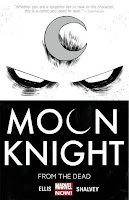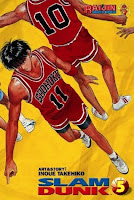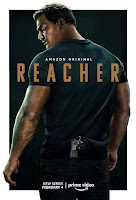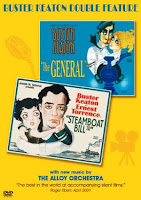This month, I tried a local series of caches based on the alphabet. The caches are in sets, with the final cache requiring information from the previous caches. In the set I was looking for, the first three caches (J, K, and L) each provide a number used in finding the coordinates for the final cache (M), which has some fake coordinates on
geocaching.com. The original series was set up several years ago. The geocacher made a new, second series with the same letters in the same park. So I searched for two sets at the same time! I drove over to Hammond Branch Park using the parking coordinates for
Alphabet M (Move)-Redux. I thought there would be an obvious trailhead but the cache page explains how an easement between two residences follows along a row of pine trees leading to a trail into the park. If I hadn't read that information, I would not have been convinced I found the right spot.
 |
| Not much of a trail |
 |
| Not much of a trailhead. At least the pine trees were there! |
The good part of geocaching in February is that there's less foliage, thorns, and critters (usually bugs are a problem). But in this park, the paths are a lot less obvious in winter without all the undergrowth. I had to bushwhack a bit more than I should have to find
Alphabet J (Jump) - Redux. I have a note-taking app on my phone (along with the geocaching app), so I noted the number that I would need for the M-redux cache.
 |
| J-Redux is in this picture somewhere |
Next up was
Alphabet_L (Look), so not one of the newer caches. My phone GPS was all over the place but the cache's hint got me back on track.
 |
| L's in there |
While walking to the next cache, I spotted a shelter clearly made by someone. It only had natural wood, no other items.
 |
| Maybe a rest stop? |
Alphabet K (Kite) - Redux was not in the spot I thought it would be. That board below seemed like a dead giveaway, but the cache was elsewhere. After finding the cache, I found the nearby trail that would have saved me another load of bushwhacking.
 |
| Sometimes the obvious spot isn't the right one |
My journey took me over a small tributary of Hammond Branch, the stream that runs through the park. A nice man-made bridge kept me going in the right direction.
 |
| Another human structure |
Alphabet L (Look) - Redux was an easy find after the others since it followed a similar theme.
 |
| In there somewhere |
I had walked past the location of
Alphabet K (Kite) because I was on the wrong side of the Hammond Branch. The write-up on the cache said there is a two-foot crossing for a stream, but I never found the spot. I think I was coming from the wrong side of the big stream, since I saw a smaller stream that connected to Hammond Branch. Plenty of fallen logs made longer-than-two-foot bridges. I was caching by myself, so I didn't want to risk the crossing. If I fell and injured myself, there'd be nobody to go for help. I decided to postpone the search to another day.
 |
| Some natural bridges |
Back at home, I calculated the coordinates for M-Redux and realized I should have done my calculating in the field. The actually coordinates were a bit farther into the park! I was ready to redo the trip anyway for the regular K and the J caches.
My son had a basketball game near the trails on the following Saturday, afterward we went to find the other caches.
Alphabet J-(Jump) was right near the school where the game was, so it was an easy find on the trails.
 |
| The trailhead |
We had a little more trouble getting to
Alphabet-K (Kite), at least we were on the right side of the waterway. With some dedicated bushwhacking, we found ground zero. The area must be very difficult in the summertime!
 |
| Somewhere in there |
With a geocaching buddy, I felt more confident about crossing Hammond Branch on the log bridges. He was confident too!
 |
| Easy rider |
On the way to the final location of
Alphabet M (Move) - Redux, we spotted a tree that stole another tree's bark!
 |
| Maybe motivated by modesty? |
The find was not hard after a longish walk. We signed the log and picked up a travel bug. We had to cross the Hammond Branch to get back to our car.
 |
| Another crossing |
 |
| A shot of my crossing |
We walked back through a neighborhood that had a lot of eclectic houses. I took a picture of a round house that was the most interesting of the bunch.
 |
| Where's the front door? |
The travel bug we found is called
BP2012 4RFUN, and is a bottle opener. I put it to good use.
 |
| A useful TB! |
I had to get some stuff at our local Scout Store which is near the Baltimore-Washington International Airport. I figured that was a good spot to drop the travel bug. The first cache I found,
Off the Sidewalk (Again), was too small for the bug.
 |
| Somewhere in there |
A short drive away is
Holiday Fun 2017, which promised to be a larger cache. I parked near the location. I supposed the cache would be along the fence below.
 |
| Lots of options |
After a bit of searching, I checked the hint which was not helpful. I looked at previous logs and saw that some people had found it about fifty feet north of their GPS's ground zero. Since that was on the way back to the car, I tried it out. I found the ammo-box container and put the travel bug in!
 |
| Farewell, brief friend! |
We had some nice Sunday weather and took the kids geocaching to some more of the "No Outlet" sign caches. I had found a previous cache on a road marked "No Outlet" though the street did have an outlet. The cache owner finds those annoying and has made two series of caches based on "No Outlet" signs. Our first find was another faker,
YES Outlet #1 (Sweet Cherry Lane), which lets out near a reservoir to the south.
 |
| My sons by the sign that lies |
This particular cache was popular because I took the kids over to the nearby
Dunkin Donuts to get a snack.
Our next find was a genuine "No Outlet,"
Obviously No Outlet #1 (Blue Sea Drive). It's across the street from a high school and the next road over is a highway, to which Blue Sea Drive is not connected.
 |
| Walking back from the cache |
Our third and final find was
Obviously No Outlet #3 (Downdale Place). My phone GPS had a hard time picking which side of the street the cache was on.
 |
| In the picture somewhere |
The children's schools decided they had too many snow days in December and January and declared Presidents' Day as not-a-holiday. While they were in school, we parents enjoyed more good weather geocaching. Our first find was a cemetery,
King Family Cemetery. The cemetery dates back to 1829, when the area was probably all farmlands. Now, the graveyard is surrounded by industrial buildings. We looked through the headstones and found the most recent was 2020, so the grounds are still being used.
 |
| Sign at the entrance |
 |
| Some of the graves |
Cars, We got cars...3rd try is on a small hill in a different part of the industrial area. We parked on the wrong side of the fence and had to go around. The view from the cache explains the name, though clearly Covid shipping problems have depleted some inventory in the lot.
 |
| A mostly empty lot |
Our final find was
Home Away From Home. Apparently this cache owner had a second job in the neighborhood and spent a lot of time there, even on weeknights and weekends. The cache container was the micro-est micro we've ever found.
 |
| In there somewhere |
We went up 15 caches this month, a very good number for a generally unfavorable month.































































